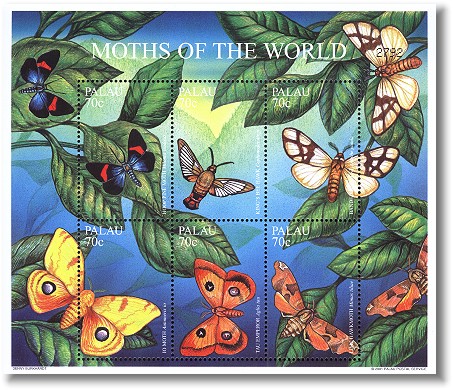With 165,000 described species worldwide, moths are among the most diverse and successful organisms on Earth. Let's begin by distinguishing moths from butterflies. Butterflies have club-like knobs on the ends of their antennae and usually perch with their wings held upwards. Moths, on the other hand, tend to perch with their wings outspread and have antennae that closely resemble bird feathers. Both moths and butterflies make a protective covering for the pupal stage of development. Moths, however, make a cocoon, which is wrapped in a covering of silk, while butterflies make a chrysalis, which is hard, smooth and has no silk covering. Unlike their sun-loving cousins, most moths are nocturnal.
Giant silkworm moths take their collective name both from their impressive size and from the fine silk they use to spin their cocoons. (Note: Commercial silk comes from the silkworm moth, which belongs to a different family.) They can turn up just about anywhere and are most active on warm, still nights after 10 pm. One of the best places to look for them is on large buildings with bright lights that shine onto walls.
A group that warrants special attention from spring through fall is the sphinx and hawk moths (sphingids). Sphingids are often brown or grey in colour, moderate to large in size, and have narrow wings and sleek abdomens. This makes them fast flyers. Many have an impressively long proboscis for feeding on nectar. Although most Sphingids are either nocturnal or crepuscular (active at dusk and dawn), some species fly during the day. These include the gallium sphinx and the hummingbird clearwing moth. Night-flying sphingids are often attracted to tube-shaped white flowers with a strong scent.
Unlike birds and mammals, there are still large gaps in our knowledge of Ontario's moths. It is for this reason that the Toronto Entomologists' Association (TEA) recently launched the Ontario Silk Moth and Sphinx Moth Atlas to gather data on their distribution, abundance and seasonal patterns. The TEA is asking people to contribute photo records of silk and sphinx moth sightings, including those needing an ID, to inaturalist.ca/projects/moths-of-ontario. The atlas already contains about 4,200 silk observations -many of them from older databases. It can be seen online at ontarioinsects.org/moth/. The hope is that the moth atlas will evolve into a rich dataset like the Ontario Butterfly Atlas, which can be seen at ontarioinsects.org/atlas.
Researchers are seeing a disturbing decline in silkworm and sphinx moth populations across northeastern North America. This has been especially notable in species like the io moth and great ash sphinx.
Source: The Peterborough Examiner, June 8, 2017
http://www.thepeterboroughexaminer.com/2017/06/08/the-wonder-of-moths-m…

- Login om te reageren
